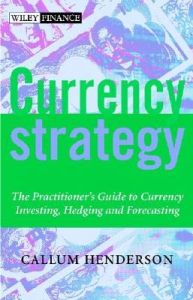Join getAbstract to access the summary!

Join getAbstract to access the summary!
Callum Henderson
Currency Strategy
The Practitioner's Guide to Currency Investing, Hedging and Forecasting
Wiley, 2002
What's inside?
It takes real expertise to participate in international currency markets. Start here.
Recommendation
In 1971, President Richard Nixon ended the convertibility of the dollar into gold and thereby scotched the mechanism of international agreements and regulations that had governed the world monetary system since the end of World War II. Over the ensuing decades, the once-stable global monetary environment became an exciting, volatile new source of risk and opportunity. Manufacturers saw their fortunes rise and fall as currency shifts favored them or, alternatively, their competitors overseas. Financial institutions discovered new opportunities and dangers in fast-moving currency markets. getAbstract.com recommends this book for its detailed and generally clear, albeit often tedious, introduction to the tools, techniques and strategies readers may use to manage risk or speculate in the world’s biggest financial arena - the unregulated international currency market.
Summary
About the Author
Callum Henderson heads Emerging EMEA Strategy for a leading U.S. investment bank based in London. He was formerly part of the Citibank FX Strategy team and Manager of FX Analysis in Asia for Standard & Poors. He has written three previous books about Asian economics, including Asia Falling, Asian Dawn and China on the Brink.


















Comment on this summary